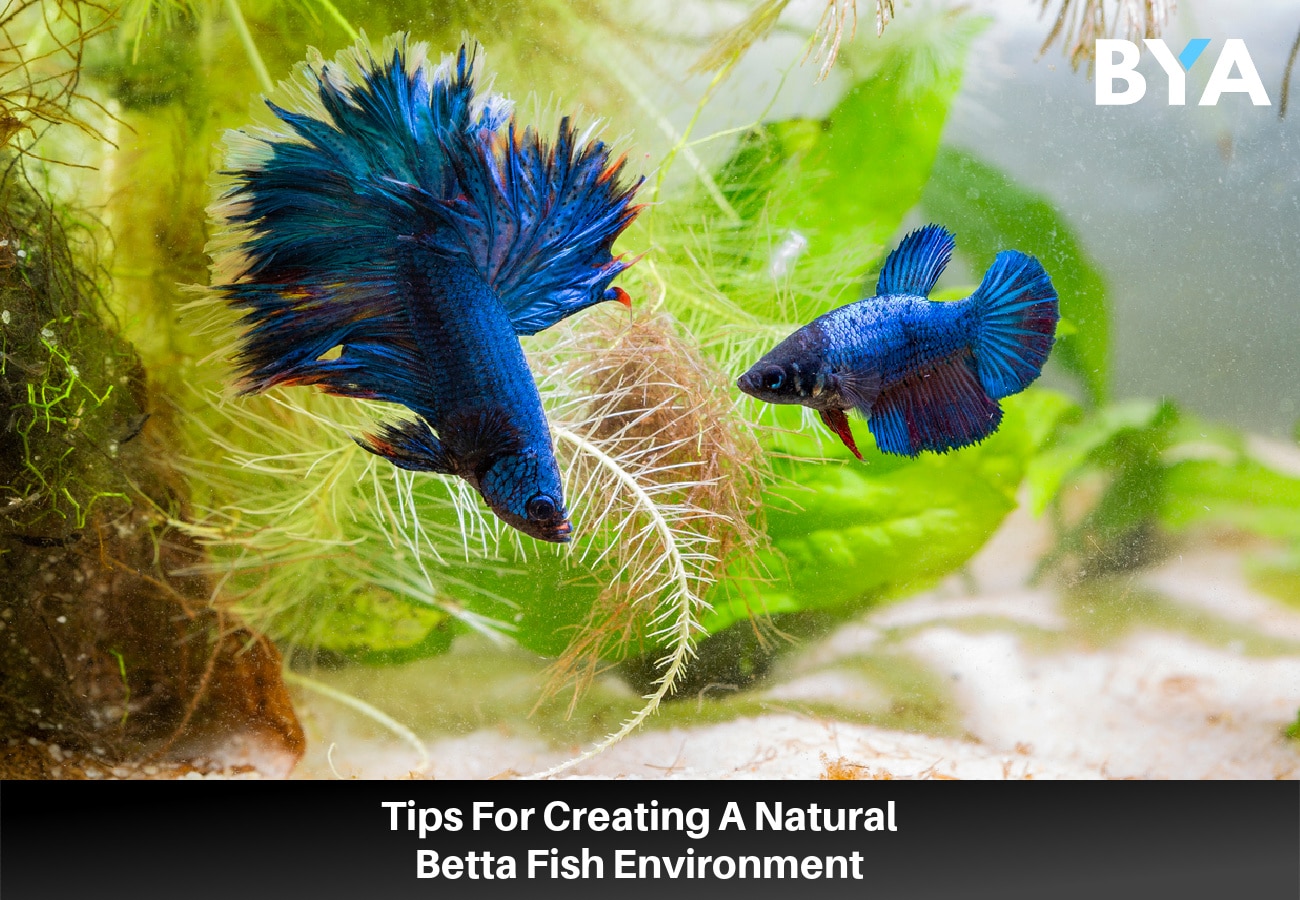Learning how to keep a betta fish happy is easy — it’s best to mimic their natural environment. Bettas come from the waters of Southeast Asia, particularly Thailand. Captive-bred bettas are somewhat different from their wild relatives. Wild and captive bettas have the same needs.
What do bettas like in their tank?
Their favorite items are driftwood and plenty of plants. They need a heater to maintain the tropical temperatures of Southeast Asia. A filter is a must to produce some flow and oxygen, making their lives easier.

Where Are Betta Fish From?
Betta fish (Betta splendens) are native to Thailand. They also live in other nearby Southeast Asian countries. Burma, Cambodia, Indonesia, Laos, Malaysia, and Vietnam are a few.
Betta Fish Natural Habitat
In the wild, a betta fish habitat comprises warm, shallow, slow-moving waters. They live in rice paddies, streams, marshes, and even small ponds. They are used to receiving little oxygen from the slow-moving and stagnant waters. Their labyrinth organ — an organ that allows them to breathe air — makes up for this.
The bettas use these habitats thick with vegetation to create their territories.
The water temperatures are stable in the wild. Captive bettas experience stress if the water temperature fluctuates.
The temperatures of Thailand are around 75°F (24°C) for most of the year. It may drop to about 50°F (10°C) in the winter. During the colder periods, a betta’s metabolism decreases, and they become lethargic.
The Changing Seasons Alter Their Habitat
A betta fish’s habitat is not the same year-round — Southeast Asia has wet and dry periods.
During the wet periods, bettas have larger habitats, like streams and rice paddies.
The dry season causes much of the water to evaporate. Bettas become trapped in small, stagnant puddles. The dry season is when their labyrinth organ comes especially in handy. The small pools are almost entirely devoid of oxygen.
Bettas are excellent jumpers, too — something many owners find out the hard way.
They use their jumping ability to travel from puddle to puddle. They continue moving until they find a larger body of more habitable water.
Wild bettas look and act differently than captive-bred bettas. Their colors are duller, they have shorter fins, and they tend to be more docile.
Captive-bred bettas are specifically bred for their long fins, bright colors, and aggression.
Wild betta’s more subdued coloration helps them to blend in with the environment.
A Wild Betta’s Territory
Bettas are small fish — their territory only spans about one square meter. They choose areas with lots of vegetation so they can’t see the other bettas. Unable to see each other, bettas are less likely to fight.
How To Set Up A Good Environment For Betta Fish
The best environment for betta fish is one that mimics their natural habitat. Fortunately, it’s easy to replicate their natural homes.
An ideal betta tank is at least five gallons and is longer than it is tall. Bettas love to explore and need ample space to move around. A shallow tank helps them swim to the surface more easily for air.
Betta Water Conditions
Being from tropical Southeast Asia, bettas need warm temperatures between 75-81°F (23.9-27.2°C).
A water heater is necessary in most homes to keep the temperature warm enough. An adjustable heater is best as it allows for complete control.
Keep a thermometer in the tank and check the temperature every day.
The rest of the water conditions should look like this:
- pH: 6.5-7.5
- Ammonia: 0 ppm
- Nitrites: 0 ppm
- Nitrates: >40 ppm
Do Betta Fish Need A Filter?
A filter is necessary to keep the water clean and healthy. Bettas often live in smaller aquariums that get dirty more quickly. The buildup of toxins can be harmful and even fatal to bettas.
Since bettas have a labyrinth organ, they don’t need a lot of dissolved oxygen like other fish. Creating a lot of flow is unnecessary and can be detrimental to bettas since they are weak swimmers.
Choose a filter — like a sponge filter — that is adjustable. Keep the flow low so the fish doesn’t have trouble swimming.
Stronger filters may need baffles to impede the flow. Baffles are makeshift devices that attach to filters to stifle the stream.
Do Bettas Like Plants?
Bettas love plants as they provide a place to rest and hide. Choose from a variety of short, broad-leafed plants and floating plants. They enjoy relaxing on their sides on large leaves.
Some good plants include:
- Anubias sp.
- Java fern
- Anacharis
- Cryptocoryne
- Hornwort
Add Some Driftwood
Driftwood helps to recreate the natural murkiness of the water. Be careful to choose wood pieces without sharp edges.
The natural waters of Southeast Asia often appear murky because of the tannins in the water. Plants release tannins and turn the water slightly brown. They also contain properties that boost the health of fish.
What Fish Are Compatible With Betta Fish?
Betta fish do well with other peaceful fish with short fins and duller colors.
In the wild, bettas commonly live alongside gouramis, loaches, rasboras, and barbs. Stick with these species to replicate a betta’s natural environment.
Many other fish make good tank mates for bettas, too.
FAQs
What Is The Best Place To Buy Betta Fish Online?
The best places to buy betta fish online are from reputable breeders that take pride in caring for the fish.
Some good retailers include:
- Frank’s Bettas
- Betta Squad USA
- Blackwater Aquatics
- Coast Gem USA
Are Betta Fish Smart?
Betta fish are smart fish that learn to recognize their owners and can even perform tricks.
Researchers believe bettas are closely related to cichlids. Cichlids are one of the most intelligent freshwater species.
Some betta fish owners have taught their bettas to jump for food. Others can swim through hoops and push around balls.
